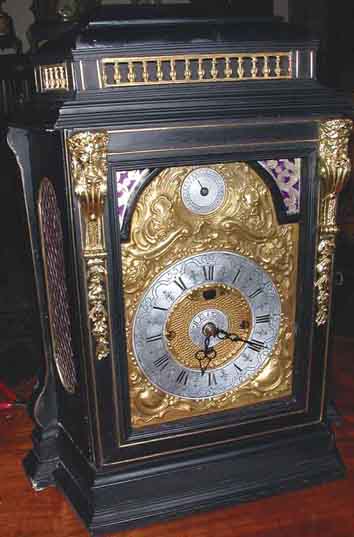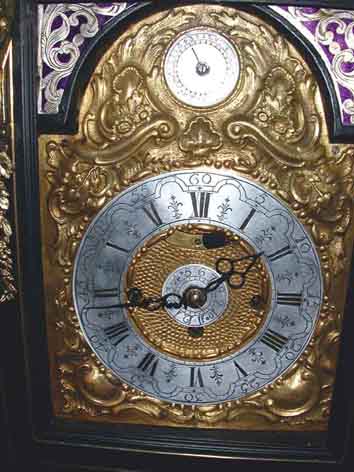Peter Hochögger




I have a clock by Peter Hochögger and would love to know more about him—when he was working, where he worked etc.
This clock was bought by me for the sum of R300 (£25.00) in poor condition, see pictures. It was on a tea tray ready to be thrown out for dead.
I found it a very interesting movement. The time train has a fusee connected to the spring barrel by a hand-made chain. It has a verge escapement with pear-shaped bob pendulum.
The clock also has an overwind stop that was used in early German, Austrian and Dutch clocks as well as the normal pin on the fusee. The brass plates are of good quality, nice and thick with fine engraving on the back plate.
The quarter hour strike is spring driven with the drum secured to the back plate by means of a little bracket and screws.
A typical rack striking mechanism is used for the quarter strike on a bell. The hour strike is also spring-driven with rack and snail, secured to the drum but it is also used to wind the alarm of the?clock. The alarm mechanism can be clearly seen mounted in one corner of the movement. The alarm hammer is mounted on the end of a verge staff and actuated by a crown wheel. Within the centre of the dial is a pegged wheel to which the hour hand is fixed with a clutch. To set the alarm you turn the dial and the lever drops into a groove like on a count wheel. This takes the pressure off the lever on the crown wheel and its stop to allow the wheel to move the hammer back and forth for the alarm.
I do not want to take up space with the mechanics on how to peg holes and polish pivots and clean brass, also carpentry and removing rust.
The thing that struck me most of all about this maker is the use of all the different drive mechanisms all in one clock. The second most striking observation was the use of the leaf spring to do different tasks. There is a total of ten hand-made leaf springs in the clock, excluding the click springs.
The one that gave me the most trouble was the one that used the spring recoil to activate the quarter hour rack striking mechanism. If the spring tension was not enough it would not kick the release lever enough to allow it to release. If the tension was too strong it kicked the lever too far and it would not drop back into the count rack to stop the strike: it would just carry on striking. The hour strike did the same. If it was set too slack the hour strike would start as soon as the quarter hour strike started and would run simultaneously until it was adjusted correctly allowing the quarter strike function to complete.
I will again ask any readers who have more information about Peter Hochögger to let me know as I am intrigued by his clock. Peter had very high standards of workmanship as the clock had all the features of the day, eg a window to see the bob ticking, date, quarter-hour strike, hour strike and alarm.
The case was in poor condition. The side panels are new as well as the frame. It was made from a piano around 150 years old: judge for yourself, the job is 98 per cent complete.
Viv Puttergill, South Africa
|

